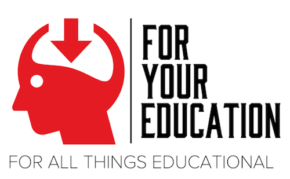ASSISTIVE TECHONLOGY TOOLS
(What is Assistive Technology?)
There are Assistive Technology tools to help students who struggle with:
Listening
Certain assistive technology (AT) tools can help people who have difficulty processing and remembering spoken language. Such devices can be used in various settings (e.g., a class lecture, or a meeting with multiple speakers).
Math
Assistive technology (AT) tools for math are designed to help people who struggle with computing, organizing, aligning, and copying math problems down on paper. With the help of visual and/or audio support, users can better set up and calculate basic math problems.
Organization and memory
Assistive technology (AT) tools can help a person plan, organize, and keep track of his calendar, schedule, task list, contact information, and miscellaneous notes. These tools allow him to manage, store, and retrieve such information with the help of special software and hand-held devices.
Reading
There is a wide range of assistive technology (AT) tools available to help individuals who struggle with reading. While each type of tool works a little differently, all of these tools help by
presenting text as speech. These tools help facilitate decoding, reading fluency, and comprehension.
Writing
There is a wide range of assistive technology (AT) tools available to help students who struggle with writing. Some of these tools help students circumvent the actual physical task of writing, while others facilitate proper spelling, punctuation, grammar, word usage, and organization.
There are a wide variety of AT tools available. Often the term “assistive Technology” has been usually been applied to computer terms, such as hardware and software and electronic devices. Although, many AT tool are now available on the Internet, AT tool that support children with learning disabilities include:
Abbreviation expanders
Used with word processing, these software programs allow a user to create, store, and re-use abbreviations for frequently-used words or phrases. This can save the user keystrokes and ensure proper spelling of words and phrases he has coded as abbreviations.
Alternative keyboards
These programmable keyboards have special overlays that customize the appearance and function of a standard keyboard. Students who have LD or have trouble typing may benefit from customization that reduces input choices, groups keys by color/location, and adds graphics to aid comprehension.
Audio books and publications
Recorded books allow users to listen to text and are available in a variety of formats, such as audiocassettes, CDs, and MP3 downloads. Special playback units allow users to and search and bookmark pages and chapters. Subscription services offer extensive electronic library collections.
Electronic math work sheets
Electronic math worksheets are software programs that can help a user organize, align, and work through math problems on a computer screen. Numbers that appear onscreen can also be read aloud via a speech synthesizer. This may be helpful to people who have trouble aligning math problems with pencil and paper.
Freeform database software
Used in conjunction with word processing or other software, this tool allows the user to create and store electronic notes by “jotting down” relevant information of any length and on any subject. He can later retrieve the information by typing any fragment of the original note.
Graphic organizers and outlining
Graphic organizers and outlining programs help users who have trouble organizing and outlining information as they begin a writing project. This type of program lets a user “dump”
information in an unstructured manner and later helps him organize the information into appropriate categories and order.
Information/data managers
This type of tool helps a person plan, organize, store, and retrieve his calendar, task list, contact data, and other information in electronic form. Personal data managers may be portable, hand- held devices, computer software, or a combination of those tools working together by “sharing” data.
Optical character recognition
This technology allows a user to scan printed material into a computer or handheld unit. The scanned text is then read aloud via a speech synthesis/screen reading system. Optical Character Recognition (OCR) is available as stand-alone units, computer software, and as portable, pocket-sized devices.
Personal FM listening systems
A personal FM listening system transmits a speaker’s voice directly to the user’s ear. This may help the listener focus on what the speaker is saying. The unit consists of a wireless transmitter (with microphone) worn by the speaker and a receiver (with earphone) worn by the listener.
Portable word processors
A portable word processor is lightweight device that is easy to transport (e.g., from classroom to home). It can be helpful to kids who may have trouble writing by hand and prefer to use a keyboard. Word processing allows the user to edit and correct his written work more efficiently than doing so by hand.
Proofreading programs
Students who struggle with writing (e.g., spelling, grammar, punctuation, word usage, and sentence structure) may benefit from software programs (included in many word processing systems) that scan word processing documents and alert the user to possible errors.
Speech-recognition programs
A speech recognition program works in conjunction with a word processor. The user “dictates” into a microphone, and his spoken words appear on the computer screen as text. This can help a user whose oral language ability is better than his writing skills.
Speech synthesizers/screen readers
These systems can display and read aloud text on a computer screen, including text that has been typed by the user, scanned in from printed pages (e.g., books, letters), or text appearing on the Internet.
Talking calculators
A talking calculator has a built-in speech synthesizer that reads aloud each number, symbol, or operation key a user presses; it also vocalizes the answer to the problem. This auditory
feedback may help him check the accuracy of the keys he presses and verify the answer before he transfers it to paper.
Talking spell checkers and electronic dictionaries
Talking spell checkers and electronic dictionaries can help a poor speller select or identify appropriate words and correct spelling errors during the process of writing and proofreading. Talking devices “read aloud” and display the selected words onscreen, so the user can see and hear the words.
Variable-speed tape recorders
Tape recorders/players allow a user to listen to pre-recorded text or to capture spoken information (e.g., a classroom lecture) and play it back later. Variable speed control (VSC) tape recorders speed up or slow down the playback rate without distorting the “speaker’s” voice.
Word-prediction programs
Word prediction software can help a user during word processing by “predicting” a word the user intends to type. Predictions are based on spelling, syntax, and frequent/recent use. This prompts kids who struggle with writing to use proper spelling, grammar, and word choices, with fewer keystrokes.
Therefore, In a broad sense, assistive technology (AT) is any device, piece of equipment or system that helps a person with a disability work around his challenges so he can learn, communicate or simply function better.
Therefore, there are many kinds of AT that help kids with learning and attention issues. These tools can help them work around their challenges while emphasizing and stress their strengths. This helps them become more successful, productive students. At the same time, their confidence and independence can grow.
*Keynote:
If a child with an IEP needs assistive technology, the school district must do an assessment and provide the tools.





A lot of these seem like really neat, efficient fixes to some major debilitating problems. The wonders of technology! Hopefully these will become more widely integrated in the coming years.